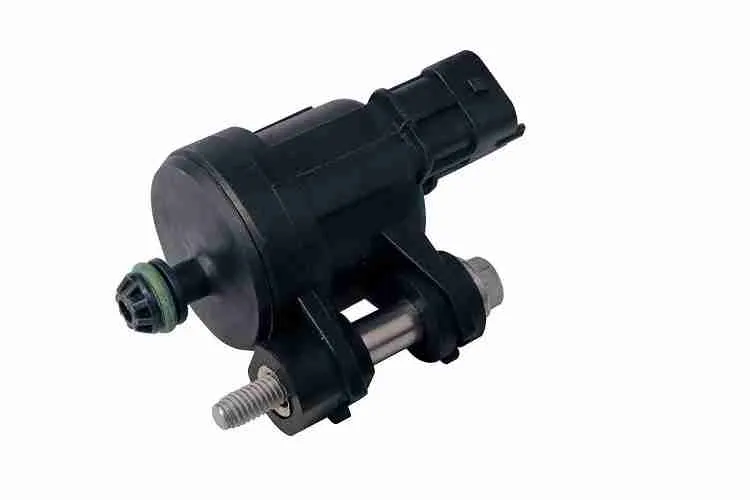How to Clean Purge Solenoid Valve – 5 Easy Steps

How to Clean Purge Solenoid Valve
The purge solenoid valve is a part of a vehicle in the Evaporative Emission Control system. Its main work is to prevent fuel vapor from escaping from the fuel tank. As the engine runs in a modern car, the valve opens gradually when the engine warms up. Thus, it allows some vapors to move from the charcoal canister to the engine where it’s burnt. Various sensors, however, monitor the flow. For example, the “Check Engine” light is illuminated by the computer when there is more or less flow than what should be produced under the right conditions.
Can you clean a purge solenoid valve?
Yes, you can clean a purge solenoid valve. There are two main ways to clean the purge solenoid valve. You choose the one to use depending on your technical knowledge. The main objective is to remove all that may prevent it from working smoothly. One of the ways to clean is doing it without opening it. You simply rinse the internal components to remove the dirt. For anyone with technical skills, you can open the purge valve and clean it.
How do you clean a vapor canister purge valve?
This is how you clean the purge solenoid:
Step 1
Start by spraying a lot of MAF cleaner or carb cleaner in both purge solenoid valve tubes.
Step 2
Using your fingers, cover the two ends of the purge valve and shake it thoroughly. Keep them covered until all dirt is loosened.
Step 3
Uncover the ends and allow the liquid to flow out. Next, it should remove the dirt, debris, and charcoal and keep repeating the first and second steps above until the liquid comes out clean.
Step 4
Spray contact cleaner inside the valve connector along with the car switch. From there, allow everything to dry.
Deep Cleaning
Purge valves are supposed to be opened. However, it can be opened using a screwdriver with a flat blade or something like a knife. Here is how to deep clean your purge solenoid valve.
Step 1
A majority of purge valves look like two halves glued together. So, you can easily separate the two using a flat blade screwdriver. Remove as much glue as you can before using your hands to separate the case.
Step 2
After splitting the purge valve, one of two parts will have the components, and the other is empty. Therefore, you should remove the case of the valve body.
Step 3
Check the interior rubber parts and O-rings. Lubricate them using silicone grease. Remember to seal the O-ring properly when reassembling the valve to prevent possible leakage.
Step 4
Using MAF or Carb clean, spray the solenoid and rub the orifices using a dry cloth for deep cleaning.
Step 5
When cleaning the interior of the purge valve, make sure you put everything back correctly. If not careful, you may damage your purge solenoid valve. Use strong glue like Epoxy glue to reseal the case just like it was when new. But, note that using such glue means it will be impossible to reopen the case to deep cleaning in the future.
Can you fix a purge valve?
Yes, you can fix a purge valve, and the best thing is that it will not cost you a fortune to repair. The check engine light is frustrating, but you will have less stress as long as you know it’s about the purge valve. It is a simple problem that is sometimes referred to by some mechanics as a canister purge valve.
A faulty purge valve is not a big problem and its failure doesn’t cause your vehicle to smoke or develop visible problems, but it causes damages in some internal areas. However, it is a sensitive part of your vehicle and takes basic skills to replace the purge valve though it is always advisable to let experts do it for you.
How do I know if my purge solenoid is bad?
Check Engine Light
The first sign you should check is the check engine light. The vehicle’s computer switches on this light to detect a problem within the purge solenoid valve. However, you should get the help of a qualified mechanic because this problem may be caused by other problems affecting the engine. A small mistake may end up being costly engine repairs.
High fuel consumption
When the purge valve malfunctions, fuel vapors need to escape, and it, therefore, has to be burnt. This means your vehicle will consume more fuel to give you sufficient power.
Engine performance issues
When the purge valve is stuck open, leakage occurs. This causes the air to flow in the combustion chamber at extremely high levels, and it messes with your engine’s performance and leads to different issues.
Difficulty starting
Difficult starting is one of the common signs of purge valves. This is due to the vacuum leak that occurs due to problems within the canister purge solenoid. As a result, the vehicle will not start quickly; the unmetered air caused by a vacuum leak finds its way to the engine. It affects the air-fuel ratio and hence the difficulty of starting the engine.
What causes problems in the purge valves?
Some common causes of problems in the purge valves are holes or blockage in the supply lines. This affects the performance of the solenoid valves and fails to function, and causes the valve to remain closed. But the failure of the solenoid electrical portion can also make the valves remain closed.
Is it safe to drive with a bad purge valve?
Yes, you can still drive your car even after it has been diagnosed with a bad purge valve. However, you risk causing further damage to the EVAP system and other parts of the vehicle. You may not be risking your life, but it will harm your car and end up costing you a fortune.
While DIY may seem like a great thing, you may not have the right tools, time, skills, or safe workplace to repair. You should get help from a professional mechanic for quality repairs.














No Comment